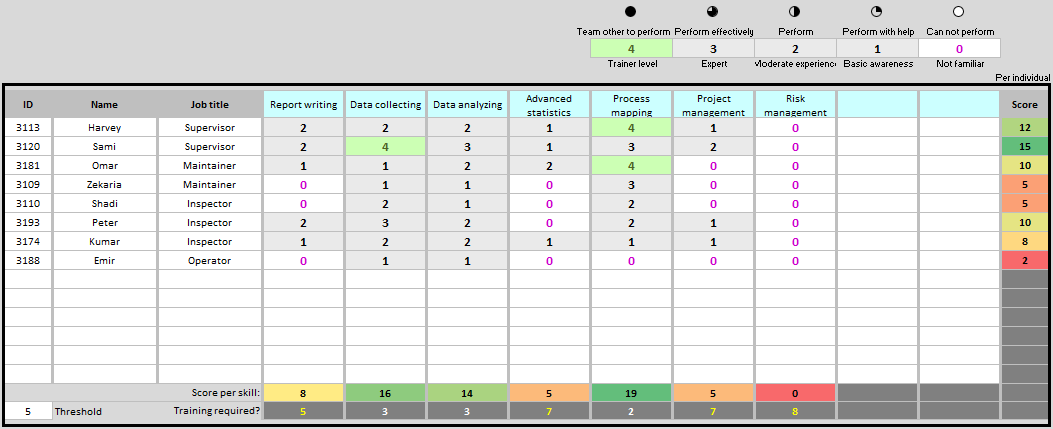Level Three Leadership – Production: Making Things Happen Separates Real Leaders
For the past few weeks, this blog has been reviewing “The Five Levels of Leadership” by John Maxwell and how those levels relate to lean leadership. This week’s blog will discuss Level three leadership: Production.
The 5 Levels are like a staircase – all the higher levels rest on the lower ones. Every leader must pass through every level to get to the next one. For example, Level 2 builds on Level 1. You cannot be a Level 3 leader until you’ve mastered Level 2. But once you’ve built a relationship with your people, you’re ready to focus on producing results.
The Production level is where leadership takes off and advances to another level. Production qualifies and separates true leaders from people who merely occupy leadership positions. Good leaders always make things happen. They get results. They can, and usually do, make a significant impact on an organization. Not only are they productive individually, but their teams are productive. This ability gives Level three leaders confidence, credibility, and increased influence.
Good leaders know their team. Great leaders leverage the talents of their team to accomplish goals. Level three is about creating a winning team. As Peter Drucker—considered to be the person who invented management and the foundations of modern business—said, “There are two types of people in the business community; those who produce results, and those who give you reasons they didn’t.”
Lean leadership is defined by the ability to empower and enable people. It revolves around the concept of helping people achieve professional and personal growth allowing them to take pride in both themselves and their work. As a Level three leader, you have built trust and respect at Level 2, and, as a result, others will follow you. This kind of leadership promotes the development of a continuous improvement culture in an organization, through worker interaction, decision-making, and communication.
Using a skills matrix will help you discover the skills and talents of your team and ensure you are using them to further the vision of the organization. A skills matrix considers five levels of capability:
- I don’t know how to do something
- I can do it generally
- I can do it well
- I am certified as capable of doing it
- I can teach others to do it.
It is the role of the leader to use a skills matrix to determine the key processes, who need training in what areas, and who is best able to teach those skills. Once there is clarity, the leader can coach the members of the group to facilitate skills development.

Reference: https://citoolkit.com/wp-content/uploads/templates/skills_matrixM.png
No one can fake Level three leadership. Either you’re producing for the organization and adding to its bottom line or you’re not. Thomas Watson, the founder of IBM, noted, “The outstanding leaders of every age are those who set their quotas and constantly exceed them.” That is a good description of Level three leaders. They are self-motivated and productive. As a result, they create momentum and develop an environment of success, which makes the team better and stronger.
Some people never move from Level 2 Permission to Level 3 Production. Why? They can’t produce results. When that is the case, it’s usually because they lack the self-discipline, work ethic, or organization skills to be productive. If you want to go to higher levels of leadership, you have to produce. There is no other way around it.
Leadership Assessment1
Read the following ten statements and place a checkmark next to each one that you agree is true for you. Answer using your first instinct. Please do not skip questions, and do not go back and change any of your responses.
- I consistently hit targets and goals in my work.
- Good people always want to work with me and my team.
- People see me as an expert in my field and seek me out to learn from me.
- I am constantly setting and achieving higher goals for myself, even when my superiors don’t set them for me.
- My performance in my work often carries the team to a higher level.
- I give my best to whatever I do.
- I am comfortable with the idea that others are watching how I perform and follow my example.
- I am known as a problem solver, and I often get difficult tasks done.
- My work is very consistent daily.
- I have systems and routines that help me perform at a very high level.
If you marked eight or more of the above statements is true for you, you have mastered Level 3 Leadership.
Next week’s blog will discuss Level 4 Leadership: People Development
1 The 5 Levels of Leadership, John Maxwell
A special thanks to Cheryl Archer for developing this blog post!
As always it is an honor serving you and I hope that you and your company are getting better every day!
Follow me on Twitter
Join me on LinkedIn
Listen to the podcast here

